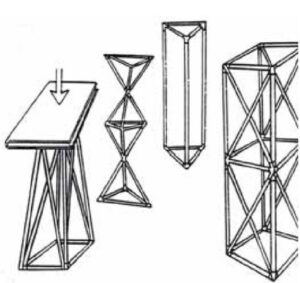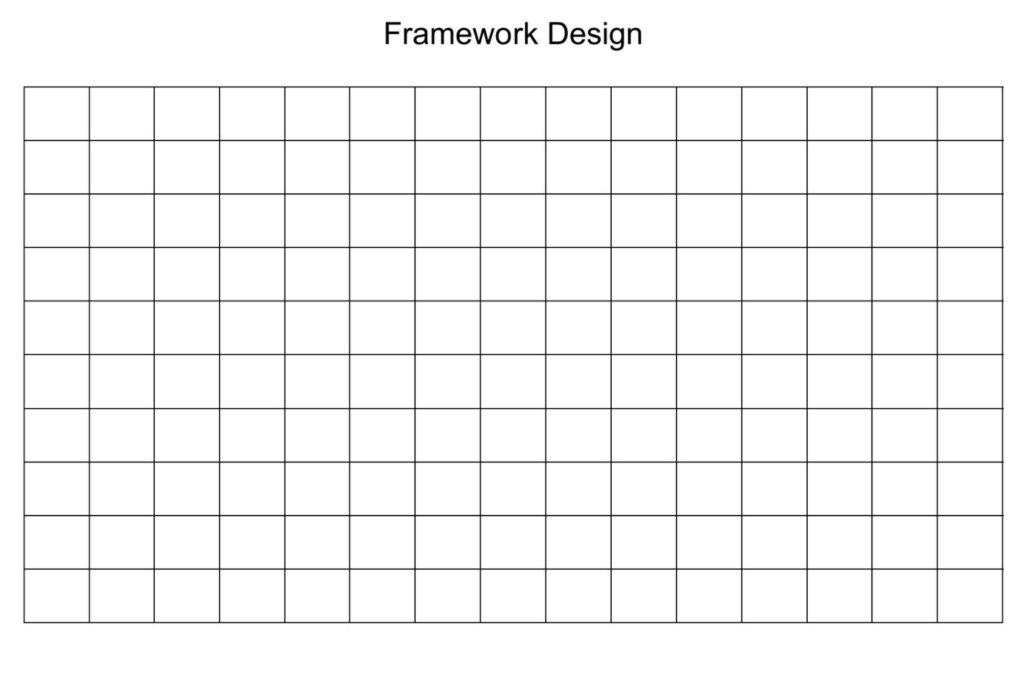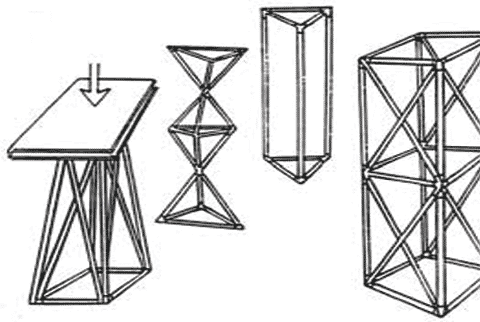Overview
Materials
Per Class:
BID:Number of sheets of paper x $10,000,000 = _____________ |
Per Team of 2-4 Students:
|
Instructions
Students design a model for a spaceship frame that can withstand weight and use as few materials as possible.
-
 Divide the class into groups and distribute materials. Introduce the activity and discuss the constraints for their framework:
Divide the class into groups and distribute materials. Introduce the activity and discuss the constraints for their framework:
- The framework must be at least 40 cm tall and wide enough at the top to balance a weight (show them the weight you will use).
- Track the amount of materials you are using and add up the total cost of materials used.
- If the framework holds the weight, the cost of materials will be your bid.
- Each sheet of paper = $10 million in construction materials and labor; each centimeter of tape = $100,000.
- The winner of the competition will have the lowest bid and a framework that supports the weight.
- The total amount of time students should take for design, construction, and materials cost tracking is about 20 minutes.
- Tell students to design their framework using the grid on the assignment sheet, and then to build their model.
- Ask teams to bring their models to the testing area. Speculate about which model looks the strongest and why.
- To test the models, stand each one on a flat surface. Place the book or other weight on top. Be ready to catch the weight if the structure collapses!
- Ask the teams whose structures withstood the weight challenge to submit their bids. The winner is the framework that uses the least amount of materials and thus has the lowest bid.
Printables
Design the Mars space vehicle framework. Use the space below to sketch your design. Using only the provided materials, construct a model of your framework to be used for testing its strength. For the test, the framework will be stood on one end. The crew compartment end will be upward. The framework must be at least 40 centimeters tall and must be wide enough at the top to balance a weight your teacher has selected for the test. As you construct your framework, keep track of the materials you use. Each sheet of paper represents an investment of $10,000,000 in materials and labor, and each centimeter of tape an investment of $100,000. Total the cost of all the materials. If your framework is able to support the weight, the cost of your materials will be your bid. The successful team with the lowest bid will win the competition.

Guiding questions
-
Which way can you shape or fold the paper to increase its strength?
-
Which geometrical shapes are stronger: Triangles? Squares? Ovals?
-
What’s the least amount of tape you can use to make the paper hold its shape and also reinforce it to make it stronger?
-
How does the length of the paper shape affect its strength?
-
If you were really going to build a spaceship framework, do you think you’d have to sacrifice some lightness to increase safety? Why or why not?
Engineering & science connections
- Load is the force of pressure acting on an object, in this case caused by gravity pulling down on the book. When it comes to actual spaceflight, there would be other loads acting on the framework, including those from acceleration of flight, weight of the contents, and wind from the side.
- There has never been a failure or accident with a space vehicle due to a specific failure with the frame structure. However, the Challenger and Columbia space shuttles were both destroyed on their journeys due to other failures.
- This activity illustrates how engineering companies compete for contracts. They submit the lowest bid possible that will fulfill all of the design and project requirements.
- Depending on where they are in their orbits, Mars or Venus is the closest planet to Earth. But Mars is extremely more hospitable to human visitation, where the surface temperature on a summer day is 70 degrees Fahrenheit (20 degrees Celsius) compared to the average temperature on Venus of 864 degrees Fahrenheit (462 degrees Celsius). The first US mission to reach Mars was the Mariner 4 probe in 1964. It flew by the planet and returned 21 close- up images. NASA’s current goal is to get humans to Mars in the mid-2030s.


0 Comments